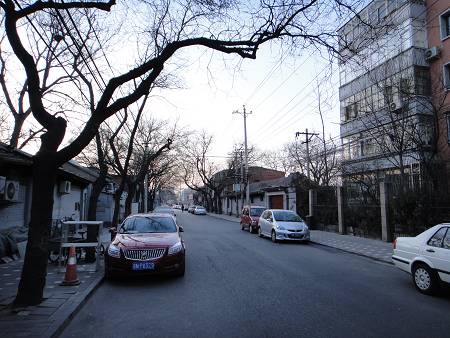Bank shot---Xijiaominxiang Hutong is the original commercial road
|
|
|
For a while, Xijiaominxiang was Beijing's Wall Street. Photos: Yin Yeping |
Winding about 1,000 meters long and 10 meters wide, Xijiaominxiang is larger than the average hutong, and it has an outsized history to match. It appeared on city maps from the Ming Dynasty (1368-1644) but came into particular prominence about 100 years ago when several domestic and overseas banks chose to open in this location, making this hutong the original Financial Street in town.
Although some local residents claimed that the west side of the lane is comparatively unchanged, the east side is where you'll find some impressive examples of old bank architecture, so that's where our tour begins.
The assembly of the old banks
From the easternmost access, the first thing you'll see is a remarkable bell-tower-like three-story building with stylish Greek-style marble pillars that still houses a branch of the People's Bank of China. Although the building was built in a Western style, its designer was a Chinese called Bei Shoutong, who graduated from the Industrial University of Berlin with a degree in architecture in the early 20th century. As an overseas graduate, Bei was considered a pioneer in that field in China. Even today, despite the fact that nearly 100 years have passed since the building was established in 1919, it still stands out with a remarkably wellpreserved look.
To the west, you'll find the former Commercial Guarantee Bank of China, or Baoshang Bank, which is currently being renovated. Baoshang Bank was established as a joint venture between the German and Chinese in 1910, but after WWI the German lender withdrew its investment and the bank became the first solely Chinese-owned bank in China. In 2008 the building was converted to the China Numismatic Museum, a fitting fate as a currency museum is a good fit for a former bank. A guard at the gate told me that the museum is being renovated and will be closed until early next year.
Close to the museum is No.17, the old Beijing Branch of the Central Bank of China, which was built in the 1930s during the Republic of China (1912-1949). Now it is used to sell things like commemorative coins. If you walk further to the west, you may notice a lifeless two-story granite building in a style similar to the other old bank sites in the area. This was originally occupied by the Agricultural and Industrial Bank of China and the Agricultural Bank of France back around the 1920s. For a time it was home to the Journalists' Association of China, but it was later emptied when the association moved elsewhere.
Across the Renmindahuitang Xilu and further to the west you will come to No.27, the old site of the first bank of China, the Hu Bu Bank that opened here in 1905. Soon after, it was renamed Da Qing Bank and the Bank of China respectively. Later, the Agricultural Bank of China moved in.
Fifty-year-old Zhang, who has lived in No.27 for decades said that the place is still the property of the Agricultural Bank of China and the residents are mostly the bank's workers. But the pink building does not have much in common with the much grander bank buildings.
"This apartment was built after the demolition of the old stylish bank in the 1980s," Zhang said. "Before the demolition, No.27 looked like the bell tower-like building on the north side of the east entrance of the lane." Now the only remains of the bank are the inscribed patterns on either side of the stone gatepost.
 0
0 









Go to Forum >>0 Comments